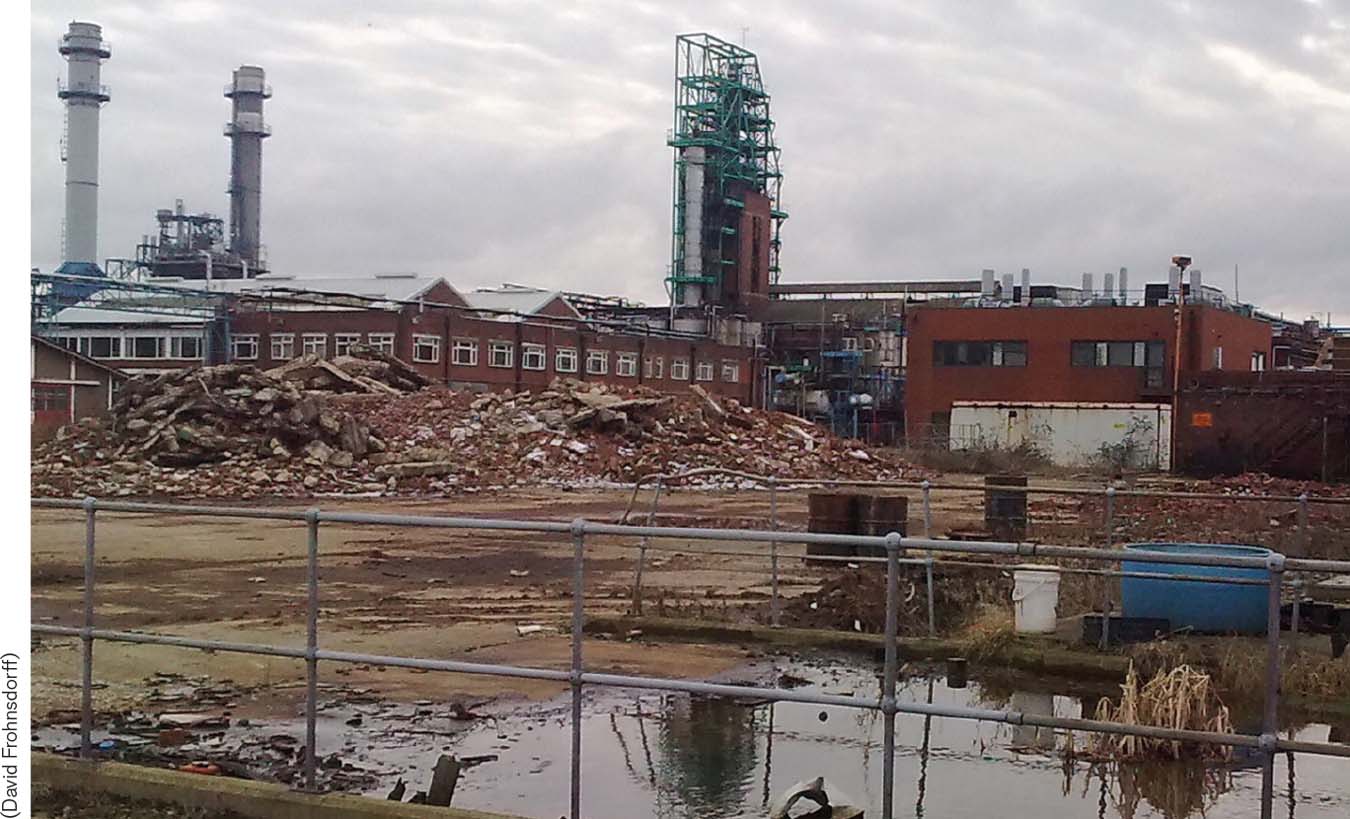12.4 Hazardous waste generation is increasing and is often handled unsafely
Comprehensive Environmental Response, Compensation, and Liability Act (CERCLA) Superfund Law enacted in 1980 to regulate hazardous waste and require companies to dispose of it safely.
Uncontrolled dumping of hazardous waste was once the norm—
Love Canal
In the spring of 1962, following an extremely wet year, residents living in a new development in Niagara Falls, New York, reported noxious fumes and colored liquids oozing from the ground and flooding roadways and yards. By the 1970s, residents noticed children were being born with birth defects and anomalies, such as misshapen feet and hands. Women were experiencing an abnormally high number of miscarriages, according to the New York State Department of Health. It didn’t take long for the local newspaper, the Niagara Falls Gazette, to discover a dark secret buried in the land.
In the late 1940s and early 1950s, a chemical manufacturing company called Hooker Chemical dumped 21,000 tons of hazardous waste in an abandoned canal, the Love Canal. When the company sold the land to the Niagara Falls Board of Education for $1, it disclosed the presence of this waste, but the city built a school there anyway, along with low-
Brownfields
brownfield An abandoned industrial site generally contaminated with hazardous waste and unusable without remediation.

How can we explain people in the past knowingly contaminating the landscapes that have become today’s brownfields?
Not all of the nation’s contaminated sites become Superfund sites. Brownfields are abandoned industrial sites that are often contaminated with hazardous waste and unusable without remediation. The EPA estimates that there are more than 450,000 brownfields in the United States alone. Unlike for the Superfund sites, no national program exists to clean up brownfields, which are commonplace in any city with an extensive industrial history (Figure 12.12). Nevertheless, communities living near brownfields in the United States may potentially be exposed to a greater risk of cancer, congenital defects, and other health problems.

Herr’s Island, Pennsylvania
Herr’s Island sits on the middle of the Allegheny River in Pittsburgh, Pennsylvania. In the early 20th century, it was home to a stockyard for cattle, a massive slaughterhouse, a scrapyard, and a metal foundry for the Pennsylvania Railroad. Long after the land was abandoned, noxious fumes still emanated from its contaminated soils, which contained animal carcasses. An environmental assessment found a variety of hazardous wastes, including PCBs (see Chapter 13, page 392) that had leached from electrical transformers in the scrapyard. One company operating there had also left behind a rusting, underground storage tank that leaked oil and heavy metals into the groundwater.
Sydney, Nova Scotia
The city of Sydney, on the coast of Nova Scotia, Canada, seemed an ideal location for a steel plant. All the basic materials, including coal, iron ore, and limestone, could be mined nearby. A large harbor provided access to worldwide shipping routes to transport the finished product. One of the waste products of this process was coal tar. In Sydney, the coal tar was diverted from the ovens and stored in large tanks before being transported elsewhere. When the mills began to close in the 1960s, most of the storage tanks, storage lagoons, and pipes were simply abandoned with no cleanup. Twenty years later, chemical wastes leaching from this site were discovered in locally caught lobsters. The Sydney Tar Ponds are a remnant of the period of the industrial age before the modern environmental movement, before any significant regulations dealing with pollution or waste were in place.
Think About It
In spite of massive levels of environmental contamination around the world, some still argue that businesses should be allowed to operate unfettered by environmental regulations. What are some of the arguments for and against this position?